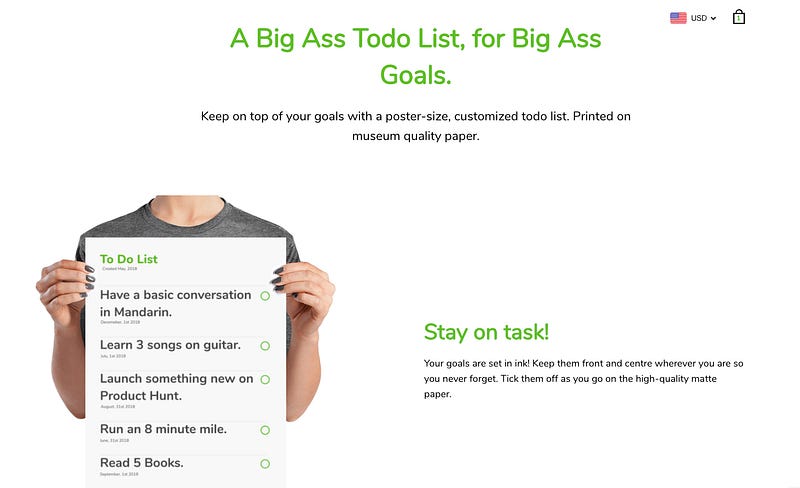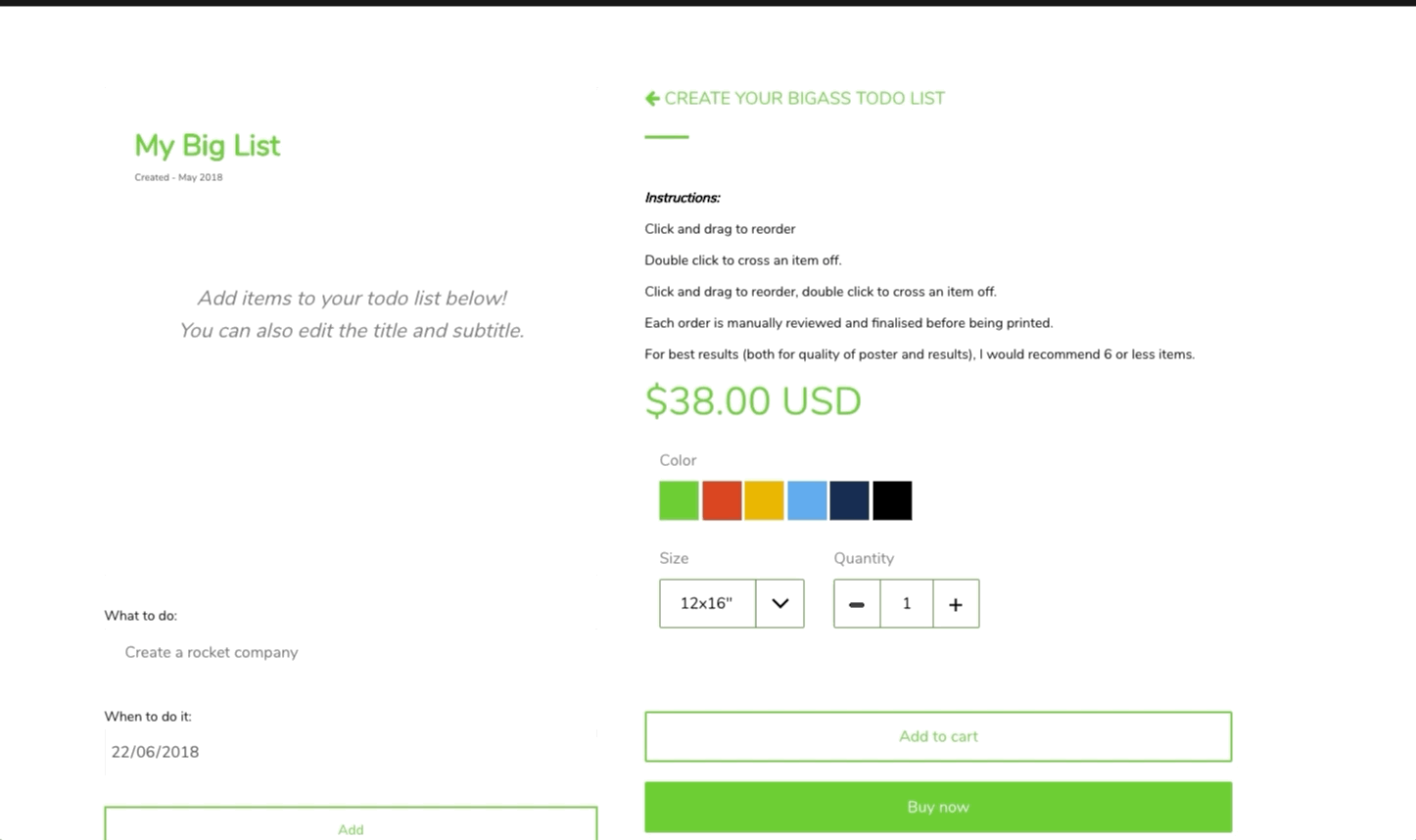Building and launching anything is hard. But if you’re doing that while working full time and travelling, it adds some extra challenges:
- You have less time
- You lose the middle of the day where you’re likely most productive
- If you’re in front of a screen, it’s hard to want to keep working in front of a screen after hours
- There’s a big cognitive load switching between work and personal projects.
- Constant stopping and starting means it’s easy to lose direction
All of these add up to become negative multipliers. Maybe you have half as much time, but it takes 4, 6, 8 times as long to finish the same project. And it’s not just the time, losing the ability to constant focus on a problem means quality and vision can suffer as well.
This is super evident if you’re building a project without enough users to give you feedback and keep you on course.
I was losing my ability to just build things. For me, this becomes evident when I start to go down idea rabbit holes, constantly exploring new ideas that don’t have any deeper purpose or would actually be something I wanted to build. You’re constantly asking “could this actually be a business / cool idea?” but never actually building something, because it’s easy to think of ideas, but executing takes resources. It becomes a dangerous cycle.
To fix this, I wanted to build and launch an idea in 24 hours. So this is how I built bigasstodolist.com
Idea
Four criteria:
- It had to be able to make money straight away
- It had to be simple in scope to avoid feature creep
- I wanted a digital product
- It had to be fun to make
I was having trouble keeping track of big picture tasks and goals. So I thought, why not build a productivity tool.
What if I had a printed out list of big-picture goals. Something that was static and kept me on track?
I decided to make a tool that would let you design a todolist and have it printed out on a poster.
Building
I knew what I wanted to build and I knew there were three components to building it:
- The website where it was hosted and payments were processed
- The interactive todolist builder
- The design and printing of posters themselves
The Name
I always use Name Mesh when looking for a name since it helps give ideas while also searching for a domain name.
It was going to be big, this was a fun project. So I registered bigasstodolist.com 🤷♂
The Website
I decided to use Shopify for this.
For one, I work with Shopify everyday, so I’m familiar with it.
But it also meant:
- I wouldn’t spend time creating a Stripe set up and managing transactions / users / email notifications
- I wouldn’t have to create a heroku instance and spend time managing that
- I could leverage themes and apps instead of creating a front-end theme or having to build out extra features
All of this meant I could focus purely on the main product.
I installed a one-page Shopify theme, and configured all the usual settings around checkout.

Shopify landing page with a mockup created with Printful
The biggest aspect was the todolist itself.
Using one of the 100’s of todolist examples online, I edited the home page liquid to include an interactive list that rendered a preview of what the list would look like.
It saved the list information into line item properties so anytime an order was placed, I would see what the person’s todo list item’s were.

The final working product
All of this was done with basic Jquery.
Printing
I created a basic template in Sketch that would let me quickly create each list as it came through.
Then I would forward the orders to Printful
This was definitely an area for automation given Printful’s API and integration with Shopify, but automation can come later and it lets me ensure the product quality is ok.
Launching
I first posted on a couple of reddit communities to get feedback on the build and idea.
After that I decided to put it on Product Hunt where it did quite well. Overall there were > 1,000 visitors.
But…
No sales :(
For me that’s a lesson in itself. It could mean a couple of things:
- The product isn’t right — do people want a static todolist?
- The audience wasn’t right (do people really buy things they’ve just found on Product Hunt? What is that conversion rate typically like)
As much as I could have hypothesised and researched, I could have never truely known if that was the case without building and testing this.
The entire project at this stage took 10–12 hours from ideation to working product (spread out over a weekend).
Learning
Even though the initial launch didn’t lead to sales, here’s a couple of things I learnt from the experience:
- Knowledge on how to take advantage of tools like Shopify in a way to quickly build products
- Improved knowledge of front-end JS. Especially some of the caveats around interactive experiences on mobile.
- Discovered some potential niche’s where this concept would work well (weddings & students doing summer projects being two). I now have a working product to test those markets
- How to take advantage of customer feedback to improve the product
I’m really interested in giving people the ability to create their own products by bringing together tools in perhaps unintended ways. Services like Printful are a great way to turn that concept into a business.
Like anything, I think building and releasing something is almost like a muscle that can be improved with constant practice, but it takes a lot of work before you can get to the point of having something to release.
Building something quickly lets you practice the actual launch, managing feedback and the realities of having an actual product vs something that will never see the light of day.
Useful Resources
Sketch
Printful
If you enjoyed reading this, I do semi-regular write-ups, mainly on launching new side projects and working remotely - https://medium.com/@joshbitossi/

Josh, record the 24 hour coding-session. I know a few devs. that have done this and it helps for a few reasons:
I don't think it would work for every project. I am building app that helps with readability, give scores. It would be the same as open sourcing project with disadvantage that if I am not careful enough somebody could see my api keys and use them. It's easy to be careless when you are tired after long coding session.
You can retrospectively record and edit if you are concious of this. But sharing is caring :) @przem
I agree but the main reason about live coding is to gain some traction. Problem is if your product is not towards this audience it won't work. For Pieter Levels it will work with hoodmaps as this is general project. I was thinking about it for my challenge of writing 6 Shopify Apps in 6 months but I decided it won't work because the audience is too narrow and I can still show everything in blog. It's like with everything, it depends.
Good tips. :)
Any particular platform that would be better than the others?
Promotions - Could you expand? Do you mean discount codes basically?
Hey @nabati I think twitch is the platform of choice.
Regarding promotions, awful description of mine (when I re-read!). Basically, I mean when you live broadcast your coding it is an awesome way to expose your brand as users and devs love to watch real-time broadcasts of coding.
Hope this helps.
Nick
Good advice, thanks Nick. I have seen this done to various degree. I'll have to give it a try.
Glad to be of help.
Thanks for the tip about Name Mesh.
If you would spin this off to other ideas, maybe pick something with a steady search volume so that once the hype wears off a steady amount could keep flowing in.
Nice :)